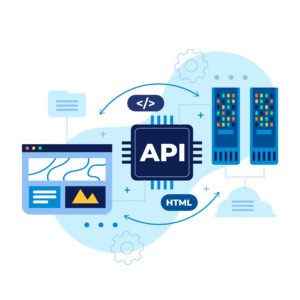Mobile App development is a process that can be completed in a number of stages. The first stage involves planning and wireframing. After the planning stage, the developer moves on to the next step and the development of the app. This guide will cover everything that you need to know from the planning to the development stage of the process.
Wireframing
Wireframing is the process of defining the layout, structure, and visual hierarchy of an app. It helps users understand the overall flow and utility of an application. Using a wireframe, developers can avoid common pitfalls and avoid frustration for end users. Wireframing is an important first step in the mobile app development process. Creating a well-defined structure will help developers avoid the need to re-write the code of an entire app. In addition, wireframes make the transition between screens clear.
When building a mobile app, there are many different factors to consider. You need to make sure you have a clear user interface and that your app is responsive. Apps with a lot of features and a lot of content can lead to endless scrolling. By using a wireframe, you can determine which features and which content are most valuable to your users.

There are many different ways to create a mobile app wireframe. Depending on the size of your company, you may want to hire an expert to assist you with this task. A skilled team will be able to guide you through the wireframing process and prevent costly mistakes later on. While it is always important to check for details, it is best to focus on the essential features of your app. For example, you might want to make sure your design includes user feedback, navigation, and push notifications.
Mobile apps have unique features and differences from desktop apps. Whether you’re developing a gaming app, a support app, or a mobile web browser, you’ll need to think about how your mobile app fits into the wider context of your product. Keeping this in mind can make the wireframing process easier and more productive.
Developing a mobile app wireframe involves creating a rough sketch of your app’s product. This includes images, fonts, buttons, animations, and more. Ideally, the mobile app wireframe should be compact and include all necessary information.
Developing a wireframe for an app can help improve overall productivity and ensure a good Customer Experience. By analyzing your app and highlighting potential problems, you’ll be able to eliminate unanticipated obstacles and ensure you’re distributing resources in the most effective way.
Planning Stage
The mobile app development process starts with a clear vision. Developers must gather user needs and preferences and develop apps that meet those expectations. They must also hire experts in programming, analytics, and design. Depending on the complexity of the app, the process can take from two weeks to several months.
There are three stages of the mobile app development process: the planning phase, the pre-development phase, and the post-development phase. Each stage has its own unique advantages. Generally, the planning stage is the shortest and least complex of the three. It involves setting up the infrastructure, choosing a niche, and identifying the skills required for developing the app.
The pre-development phase is a logical progression from the planning stage, and includes defining the scope of the project and the required components. In addition to determining the resources needed to implement the project, developers must also determine how the app will be structured, how users will interact with the app, and whether it will use existing mobile app frameworks.
Finally, the post-development phase is an important phase in the app development process, and includes marketing, PRs, and social media campaigns. These activities are designed to increase the chances of the app’s success. However, they can also result in uncontrollable budgets and constant clarifications. Ultimately, the process should result in a more polished app.
The mobile app development process involves multiple phases, but the three most basic phases are the planning phase, the pre-development phase, as well as the post-development phase. During the planning stage, you should consider a few things, such as your budget and time frame for the project.
The planning stage is an important part of the development process, as it ensures that the project is finished in a timely fashion. This is especially true if you are launching a new app, or building an app for the first time. A well-planned mobile app is a major advantage. Apps may take a few months to complete, but the planning stage is a key factor. It is essential to decide the type of app you will be developing, the size of the project, and the number of iterations.
Mockups
Mobile app mockups are a great way to see how your app will look and how users will interact with it. These visual representations of your app can help you save time and effort during development. It also helps you get stakeholder buy-in and make sure that you have a logical app structure.

A good mockup will include all of the screens in your app. You can use a specialized user experience design tool to quickly build this. Adobe XD is a popular tool that allows designers to create realistic mockups of mobile apps. You can also use a tool such as Figma. Whether you’re building a website or a mobile application, you’ll need to know the ins and outs of UX design. Using a mockup will help you to avoid common pitfalls.
Mockups are helpful for spotting issues with your app and letting you know if you’re on the right track. They can help you to identify potential UI problems, such as buttons that don’t work. Also, using a mockup can show you how users will feel when they interact with your app. One of the most common types of mockups is the functional mockup. This type of mockup allows you to experiment with different visuals and ideas without worrying about changing them later. Instead, you’ll be able to make crucial design decisions.
Another type of mockup is the wireframe. Wireframes are a low-cost way of representing the structure and layout of your app. These diagrams will help you decide on the number of screens you will need and which navigation methods you need to use. In addition, a mockup will allow you to test out different gestures and interactions. These are the things that users will use most frequently, so testing them will give you a better idea of how users will interact with your app.
Some developers prefer to use a graphic design software tool for creating mockups. However, these programs do not provide all the features needed to make a functional mockup. If you’re considering using a mockup, choose a reputable tool to avoid a costly mistake. Read reviews of a mockup tool before you make your choice.
What are the Features of Mobile App Development?
Authorized APIs
An API is a powerful method of connecting software applications. It allows developers to add functionality and integrate unrelated software products. Many types of software depend on APIs. If your application uses an API, it is important to protect your data and keep it from being snooped on by third parties.

A number of factors affect the security of your APIs. For example, if an attacker has the ability to build a script that will call your API, they could abuse your API in any way. You need to implement some basic security measures to help prevent this. There are several ways to protect your API. One method is to store a secret key on your server. This will enable you to verify user credentials. Another method is to use HTTP Basic Authentication. Using this method, you will need to generate a key and transmit it in encoded fashion.
Other methods include using OAuth. These protocols allow you to issue access tokens to users. The mobile app then uses this token to access the API service. Typically, backend APIs restrict the number of calls per user. OAuth can be used for both iOS and Android. In this case, the device stores the access token in the Keychain or SharedPreferences. Once the token expires, the device must be reauthenticated.
Some developers may choose to generate an API key at runtime. However, this is impractical for most applications. Instead, they should store the API key in a secure place. Also, they should store the key as a GUID or base64encoded secret key. An API should be tested to ensure its functionality and to ensure scalability. Interested parties can monitor all API requests and responses.
The most basic form of API authentication is HTTP Basic Authentication. This method requires you to send your API key over the wire for every request. You can also implement more robust encryption on the server side. Depending on your needs, you can opt for a more complex format. Although more complicated formats can provide more security, they can also complicate your development.








